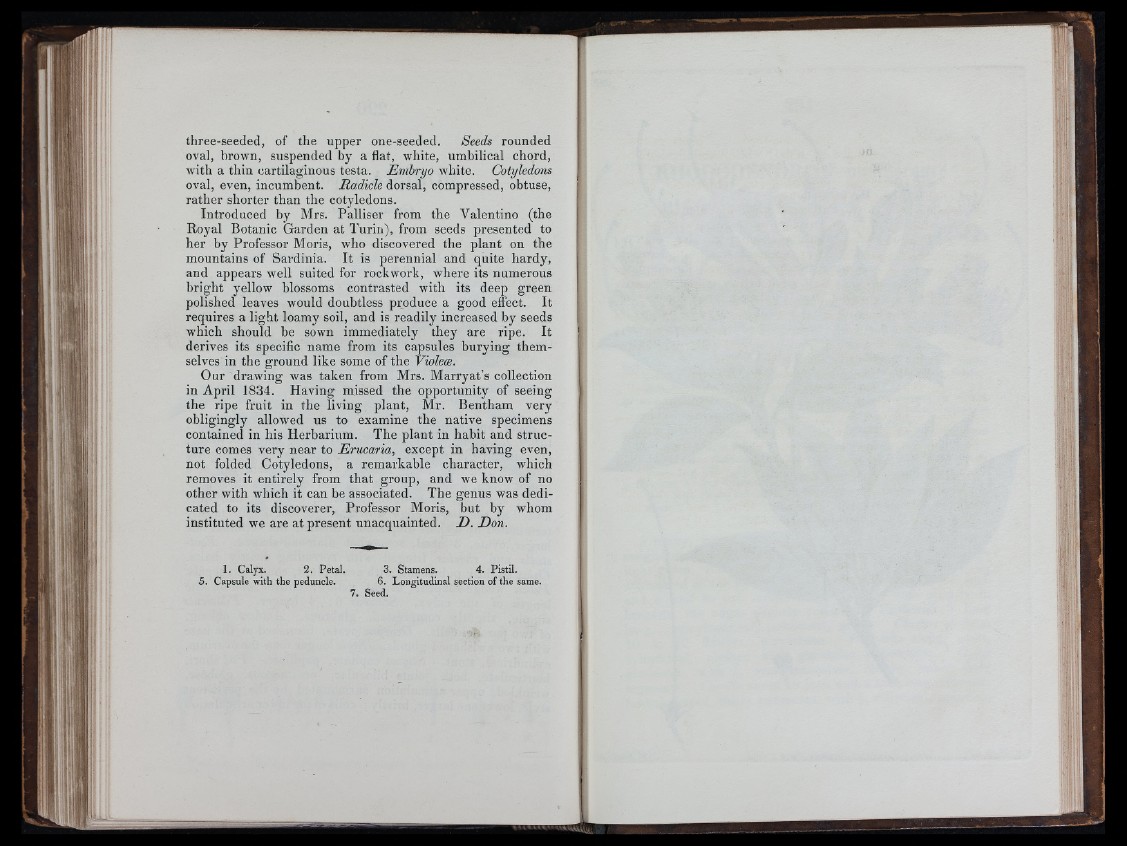
m
it:
three-seeded, of the upper one-seeded. Seeds rounded
oval, hrown, suspended by a flat, white, umbilical chord,
with a thin cartilaginous testa. Embryo white. Cotyledons
oval, even, incumbent. Radicle dorsal, compressed, obtuse,
rather shorter than the cotyledons.
Introduced by Mrs. Palliser from the Valentino (the
Royal Botanic Garden at Turin), from seeds presented to
her hy Professor Moris, who discovered the plant on the
mountains of Sardinia. It is perennial and quite hardy,
and appears well suited for rockwork, where its numerous
bright yellow blossoms contrasted with its deep green
polished leaves would doubtless produce a good effect. It
requires a light loamy soil, and is readily increased by seeds
which should be sown immediately they are ripe. It
derives its specific name from its capsules burying themselves
in the ground like some of the Violew.
Our drawing was taken from Mrs. Marryat’s collection
in April 1834. Having missed the opportunity of seeing
the ripe fruit in the living plant, Mr. Bentham very
obligingly allowed us to examine the native specimens
contained in his Herbarium. The plant in habit and structure
comes very near to Erucaria, except in having even,
not folded Cotyledons, a remarkable character, which
removes it entirely from that group, and we know of no
other with which it can be associated. The genus was dedicated
to its discoverer. Professor Moris, but by whom
instituted we are at present unacquainted. D. Don.
1. Calyx. 2. Petal. 3. Stamens. 4. Pistil.
5. Capsule with the peduncle. 6. Longitudinal section of the same.
7. Seed.
i. :
.Í;-